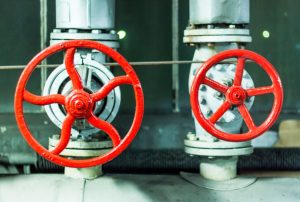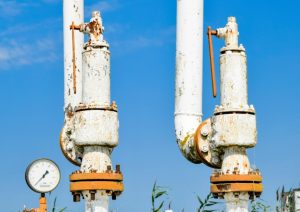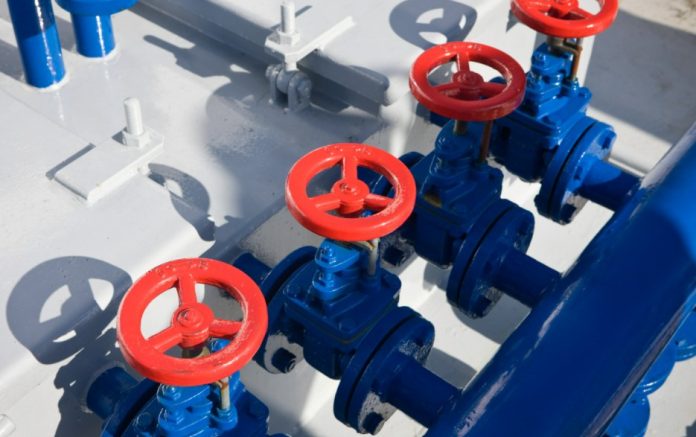Table of Contents
Systems or applications that use a fluid medium such as compressed gas, liquids, or steam are often at risk of damage or malfunction due to overpressure. This could happen due to failed controlled systems, faulty machine parts, human errors, etc. Therefore, the work of a safety valve is to protect critical components from malfunctions or damages, which could also lead to human injuries and even death.
For this reason, safety valves are actuated by the fluid media being controlled, and all the parts are mechanical. This means the valves even operate when pneumatic or electronic control systems fail.

safety valves are used in a wide array of applications in several industries. They come in different designs, sizes, operating temperatures, pressures, etc. Before we look at the areas where safety valves are used, let’s first understand the working principle of the safety valve and common types.
Safety Valves Working Principle
In simpler terms, a safety valve can be considered as a mechanical, medium-actuating pressure removing/reducing device. It works by opening up a valve and releasing excess pressure buildup as a safety procedure to avoid damage to the system. The inlet port is often designed to be smaller than the discharge port. This makes the process of reducing excess pressure easier and more convenient.
Once the system or fluid being controlled reaches a given pressure, the safety valve opens fully, and it stays in that position until the system pressure drops back to normal. That said, the safety valves should be properly selected, sized, installed, and maintained for optimal operation.

And unlike a relief valve that proportionally releases the fluid medium to keep the pressure in check, safety valves are fast-acting. They quickly open the valve, reducing the pressure almost instantly. They also work without any external interventions, unlike a relief valve that needs to be controlled.
Safety Valves Types
There are three main types of safety valves: valves with a spring-load mechanism, pilot-operated valves, and safety valves that have balanced bellows. Below is a quick overview of the three-valve types.
1. Valves with Spring-Loaded Mechanism
This type consists of a spring, a nozzle, and a popper valve. It’s available for a wide range of pressures from 1 bar to 1400 bar. The spring force controls the opening & closing of the valve. This action is also controlled by the force of the medium on the popper valve, also known as the input force. The latter is determined by the available surface areas of the popper valve and the inlet pressure.
These valves also come in varying types, each designed to handle specific types of liquids and gases. The key determining factor is the shape of the poppet valve. Some also come with a lifting chamber, providing more lift and saving time and effort needed to remove the excess pressure. The only limitation with this type of valve is its high susceptibility to backpressure, which affects the safety of the valve. Backpressure is the pressure that builds up at the outlet of the safety valve as the fluid flows out of it.
2. Valves with Balanced Bellows
This type of safety valve solves the backpressure problem common with spring-loaded valves. With metal bellows incorporated into the design, the backpressure can be reduced as it is exerted at an increased surface area, i.e., the poppet valves’ top and bottom surfaces.
Similarly, the spring mechanism is often isolated from the media such that the spring force isn’t influenced in any way. Even so, this type of safety valve also has a limit beyond which the back pressure cannot be exceeded. For instance, most types don’t operate past 15.9 bar which is the maximum backpressure.
3. Pilot-operated Safety Valve
With the pilot-operated safety valve, the poppet valve is pressed onto the nozzle by the inlet pressure. And as long as this inlet pressure is lower than the predetermined/set pressure, the valve will always remain closed.

However, as soon as the inlet pressure rises above the maximum allowable working pressure (MAWP), the valve opens, allowing the media to flow. When the pressure drops to normal, the valve closes again.
Safety Valves Applications
Some of the major applications of safety valves are in industries that deal with compressed gases, steam, and liquids. These include:
- Oil and Gas industries – e.g., oil companies that deal with petroleum products.
- Manufacturing industries – most power plants and heat exchangers use safety valves to protect against fires, explosions, and other safety hazards.
- Refineries and paper mills.
- Food processing industries.
- Chemical and pharma industries.
- Pressure booster systems for both water and air.
- Steam and industrial boiler systems.
Summary
Safety valves play a critical role in nearly all industries where there’s a risk of overpressure from compressed air, steam, and liquid. There are three main types of safety valves. Spring-loaded valves have a wide range of working pressure but suffer from backpressure. Safety valves with balanced bellows solve the backpressure problem, while pilot-operated safety valves ensure no leaks or unwanted openings.
When choosing a safety valve, always consider the set pressure, the discharge capacity, the backpressure, the valve and sealing materials, and the operating temperatures. Other factors to keep in mind are industry certifications, product warranty, and the manufacturer’s reputation or industry experience.


